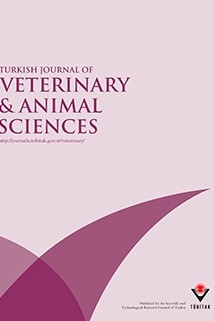
Turkish Journal of Veterinary and Animal Sciences
Yazarlar: Hatice KARAKIŞI, Sema ISISAĞ
Konular:-
Anahtar Kelimeler:Insect neuroendocrine system,Hypocerebral ganglion,Neural lamella,Perilemma,Glial cells.
Özet: The sheath of the hypocerebral ganglion was divided into two parts: an outer layer, the neural lamella and an inner layer, the perilemma. Dark and light types of glial cells were identified in the perilemma. In the 4th and 7th nymphal stages, some fibrous material related to the neural lamella accumulated in the light glial cells. It was surrounded by rough endoplasmic reticulum membranes and was then transported towards te outer parts of the sheath. Finally, it was bound to and intermingled with the lamella. These observations indicate that the 4th and 7th nymphal stages are critical for the development of the neural lamella. In the 9th nymphal and adult stages, the sheath of the ganglion was fully formed.